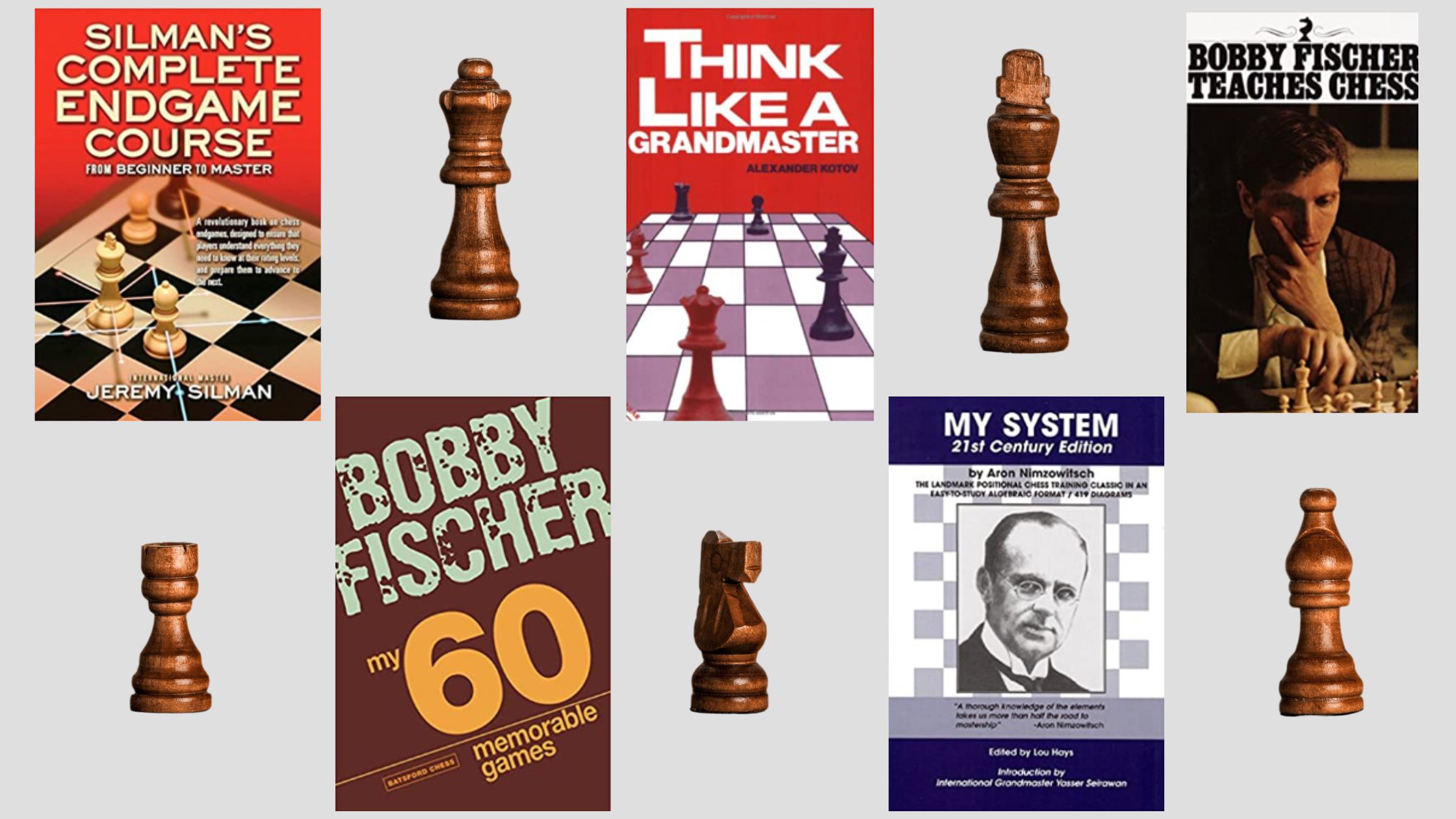03 Jan Books Every Chess Player Must Read to Better Yourself

Grasping information, studying, reading, and practicing are the best ways to better yourself at the game of chess. As for the practice part, that’s entirely on you. We can, however, help you with the studying and reading part. Here’s a list of a few books that are a must-read for every chess player.
Chess is a great way to get everyone to stay away from their gadgets and to get their minds active and running. Family tournaments can happen with each member competing against each other, and learning lessons can take place using books. Further, for kids that do not know chess, parents could bond with their kids by teaching some basics and making it a routine activity for the children to have chess lessons with mommy and daddy.
My 60 Memorable Games by Bobby Fischer
This book is a collection of Fischer’s games that was first published in 1969. The book records games from the 1957 New Jersey Open to the 1967 Sousse Interzonal. This anthology records nine losses, three draws, and forty-eight wins by the former World Champion.
This book is a collection of Fischer’s games that was first published in 1969. The book records games from the 1957 New Jersey Open to the 1967 Sousse Interzonal. This anthology records nine losses, three draws, and forty-eight wins by the former World Champion. The book is considered to be one of the finest pieces of chess literature, with impeccable analytical notes.
The book was first published in a descriptive format, and the algebraic edition was published in 1995 but was criticized by chess enthusiasts because of the changes the notations brought into the book and was denounced by Fischer himself as well. In 2008, a re-issue of Fischer’s original edition was published with a few changes and the use of the algebraic format. This edition was more widely accepted and is considered a necessary addition to a Chess Champion’s personal library.
My System by Aron Nimzowitsch
The book has consistently been among the top five best-selling chess books of all time and has been recommended by Grandmasters and coaches since 1925.
This book is known for its method of explanation of concepts about positional chess, like – pawn chains, control of the center, prophylaxis, blocking the passed pawn, etc. It caters to advanced-level players to improve their skills and abilities.
The book was considered to be one of the early works on hypermodernism and was the source of introduction to multiple concepts that are commonly seen in chess games today. ‘My System’ was divided into three parts – “The Elements,” “Positional Play,” and “Illustrative Games.”Among the elements, Nimzowitsch mentions the following:
- The center
- Play on the Open files
- Play on the Eighth and Seventh ranks
- The Passed Pawns
- The Pin
- Discovered Checks
- Exchanging
- The Pawn-chain
The three main aspects are individually very well defined and explain important play concepts in the most straightforward and exciting manner.
Think Like a Grandmaster by Alexander Kotov
This book addresses the practical approach to the game and shines some light on how to make decisions in the game. Kotov discusses how and when to analyze and the selection of candidate moves. The book primarily focuses on the thought process while playing the game and discusses a practical approach that players should have towards the game.
It involves multiple puzzles dealing with capturing the opponent’s weaknesses, pawn islands, calculation, etc…… It’s a book for advanced players to read, but it’s a definite addition to the list of classics.
Bobby Fischer Teaches Chess by Bobby Fischer
This is one of the most famous Chess Puzzle books written by Bobby Fischer and co-authored by Stuart Margulies and Donn Mosenfelder. It was published in 1966 and is one of the best-selling books of all time. This book is targeted at training Beginners and uses an approach that allows you to go back to a puzzle if you have not got the correct answer.
The book does not require knowledge of notations and uses arrows and descriptive sentences, and contains puzzles that are aimed at finding checkmates. The book has a perfect start for every Beginner, as it explains the rules of the game and then moves to the puzzles aspect. Some of the topics end with examples or variations from Fischer’s games that have occurred or variations that could occur.
The book has sold over a million copies, and it is flexible enough to be handed to any individual across the world, and it will be appreciated. The book promises to go from knowing nothing to knowing how to play a game of chess.
Silman’s Complete Endgame Course: From Beginner To Master by Jeremy Silman
This is one of the best books on End Games available in chess literature, and we only have Silman to thank for it. The book does not cater to advanced players; it rather sells on the concept that a player should only study the kind of end game feasible to his/her level.
The book is the best gift to a Beginner looking to strengthen their end game. The IM has carefully curated this book catering to a very specific audience, and I do not recommend it to the advanced players reading this blog. The book begins with the simplest end games and then moves to the more complex ones gradually as the rating increase.
These were our top five recommendations for all our fellow chess lovers. With so much information available all over the internet, these books may seem redundant; however, we know some of you still love the feel of paper, and we hope this article helps you begin your journey to browse through chess literature.



